Roofing sheets are an essential part of any structure, protecting the building from weather and environmental factors. When it comes to selecting the right roofing material, the dimensions of roofing sheets play a critical role in ensuring the structure’s durability, aesthetic appeal, and overall functionality. Whether you’re building a residential home, an industrial complex, or a commercial space, understanding the different dimensions and materials of roofing sheets is key to making an informed decision.
This article delves into the dimensions of roofing sheets, discussing everything from their size and material composition to the types available in the market and their various applications. We will provide a detailed overview of corrugated iron sheets, specific metal powder models, and much more. Let’s embark on this journey through the world of roofing sheets.
Overview
Roofing sheets vary in dimensions, and each type offers distinct benefits. For example, corrugated iron sheets, often preferred for industrial use, differ in both thickness and length compared to residential roofing sheets. In general, the right dimension enhances the sheet’s load-bearing capacity, ease of installation, and overall weather resistance.
In this guide, we will cover several aspects:
- Corrugated iron sheets guide
- Various types and models of roofing sheets
- Key components and their functions
- Machine speed and efficiency in manufacturing
- Installation, operation, and maintenance
- Supplier recommendations and price ranges

Present Corrugated Iron Sheets Guide
Corrugated iron sheets are one of the most widely used roofing materials, known for their lightweight properties, durability, and resistance to extreme weather conditions. Their wavy structure enhances strength, making them a prime choice for both residential and commercial projects.
Dimensions of Corrugated Iron Sheets
Corrugated sheets come in various dimensions to suit different building needs. Here’s a general breakdown:
| सामग्री | Sheet Thickness (mm) | Sheet Width (mm) | Sheet Length (mm) |
|---|---|---|---|
| Galvanized Iron | 0.4 to 1.2 | 600 to 1050 | 1800 to 6000 |
| Aluminum-Zinc Coated | 0.3 to 0.8 | 750 to 1200 | 1500 to 6100 |
| Polycarbonate | 0.8 to 1.5 | 600 to 980 | 1800 to 7000 |
Types of Roofing Sheets Based on Dimensions
Roofing sheets come in various materials and designs. Each type has its own specific dimensions, which impact not just the aesthetics but also the functionality and durability of the roof. Let’s go over the most common types:
- Metal Roofing Sheets – Known for their durability and strength, metal sheets are often used in industrial and residential structures. The typical dimension range for metal roofing sheets is between 0.5 to 1.2 mm in thickness and 800 to 1250 mm in width.
- Plastic Roofing Sheets – These sheets are lightweight, easy to install, and perfect for small residential or agricultural buildings. They usually range from 0.7 to 1.5 mm in thickness and 700 to 1000 mm in width.
- Asphalt Roofing Sheets – These are affordable, durable, and provide good insulation properties. They typically measure around 3 mm in thickness and have a width between 1000 to 1200 mm.
- Fiberglass Roofing Sheets – These sheets are corrosion-resistant and ideal for chemical industries or environments with high exposure to saltwater. The thickness of fiberglass sheets ranges between 0.8 to 2.0 mm, with a width of around 600 to 1100 mm.
- Polycarbonate Roofing Sheets – These are transparent, allowing natural light to pass through, making them ideal for greenhouses or patios. Their dimensions usually vary between 0.8 to 1.5 mm in thickness and 600 to 1200 mm in width.
Table of Roofing Sheets Types and Dimensions
Here’s a breakdown of different roofing sheet materials along with their typical dimensions:
| Material Type | Thickness (mm) | Width (mm) | Length (mm) |
|---|---|---|---|
| Metal (Aluminum, Steel) | 0.4 – 1.2 | 600 – 1250 | 1800 – 6000 |
| Plastic (PVC, Acrylic) | 0.7 – 1.5 | 700 – 1000 | 1800 – 7000 |
| Fiberglass | 0.8 – 2.0 | 600 – 1100 | 1500 – 6500 |
| Asphalt | 3.0 | 1000 – 1200 | 1800 – 5000 |
| Polycarbonate | 0.8 – 1.5 | 600 – 1200 | 2000 – 7000 |
-
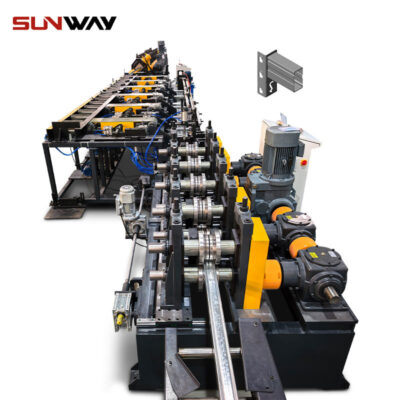 Storage Rack Shelf Box Panel Making Machine Steel Storage Rack System Box Beam Roll Forming Line
Storage Rack Shelf Box Panel Making Machine Steel Storage Rack System Box Beam Roll Forming Line -
 Highway Guardrail End Terminal Forming Machine
Highway Guardrail End Terminal Forming Machine -
 Highway U/C Post Roll Forming Machine
Highway U/C Post Roll Forming Machine -
 2 वेव्स हाईवे गार्डरेल रोल फॉर्मिंग मशीन
2 वेव्स हाईवे गार्डरेल रोल फॉर्मिंग मशीन -
 三波型高速公路护栏辊压成型机
三波型高速公路护栏辊压成型机 -
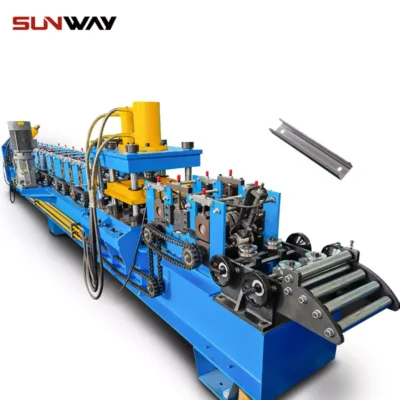 सी सेक्शन ब्रेसिंग ओमेगा स्टोरेज रैक अपराइट पोस्ट रोल बनाने की मशीन
सी सेक्शन ब्रेसिंग ओमेगा स्टोरेज रैक अपराइट पोस्ट रोल बनाने की मशीन -
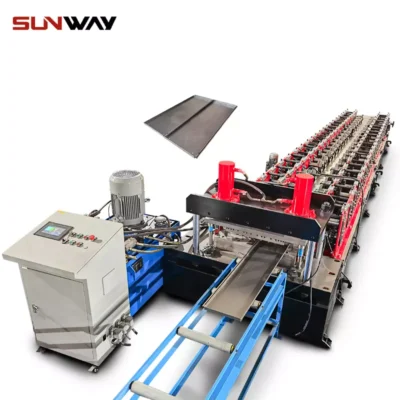 स्टील बॉक्स प्लेट रोल बनाने की मशीन बनाना
स्टील बॉक्स प्लेट रोल बनाने की मशीन बनाना -
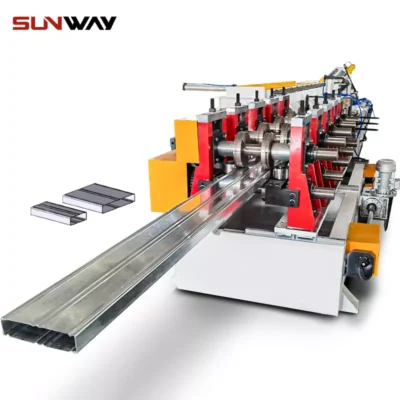 शेल्फ कॉलम के लिए बॉक्स बीम स्टील रोल बनाने की मशीन
शेल्फ कॉलम के लिए बॉक्स बीम स्टील रोल बनाने की मशीन -
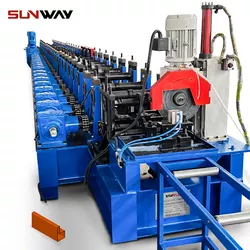 पैलेट रैकिंग स्टेप बीम पी बीम रोल बनाने की मशीन
पैलेट रैकिंग स्टेप बीम पी बीम रोल बनाने की मशीन
Working Process of Dimensions of Roofing Sheets
The dimensions of roofing sheets aren’t just arbitrary figures—they’re carefully engineered through a manufacturing process that involves precision, technical know-how, and machinery. Understanding the working process behind roofing sheets will help you better comprehend why certain dimensions matter.
Sheet Metal Forming
One of the most common manufacturing methods is roll forming. In this process, flat metal sheets are passed through a series of rollers that gradually form the desired shape and size. This process allows manufacturers to produce large quantities of roofing sheets with consistent quality.
- सामग्री चयन – Different metals such as aluminum, steel, or zinc alloys are selected based on the required characteristics like corrosion resistance, durability, and aesthetics.
- Sheet Cutting – Based on the customer’s specifications, the metal sheets are cut into specific lengths. This step ensures the sheets have the appropriate dimensions.
- रोल बनाना – The pre-cut sheets are passed through rollers that bend them into the desired profile, such as corrugated or trapezoidal.
- Coating – For added durability, many roofing sheets undergo a coating process where they’re treated with zinc, aluminum, or paint to protect against rust and UV damage.
Key Components and Functions of Roofing Sheets
To ensure that roofing sheets perform optimally, they rely on several key components. Here’s a breakdown:
| Component | Function |
|---|---|
| Sheet Metal | Forms the core structure, providing strength and durability. |
| Coating Layer | Protects the metal from corrosion, oxidation, and weather damage. |
| Fasteners | Secure the sheets to the structure and maintain stability. |
| Underlayment | Acts as an additional barrier against water infiltration. |
| Sealant | Ensures a waterproof seal between the overlapping sheets. |
Machine Speed and Efficiency in Roofing Sheet Manufacturing
To maintain efficiency in roofing sheet production, machine speed and overall efficiency are crucial factors. This table illustrates the general speeds and capabilities of modern roofing sheet manufacturing equipment:
| Machine Type | Production Speed (m/min) | Efficiency (%) |
|---|---|---|
| रोल बनाने की मशीन | 10 – 30 | 85 – 95 |
| Sheet Cutting Machine | 15 – 35 | 90 – 98 |
| Coating Machine | 8 – 25 | 80 – 90 |
| Punching and Pressing Machine | 12 – 40 | 75 – 85 |
Customized Mechanical Parameters for Roofing Sheets
In some cases, roofing sheets need to meet unique design criteria. Customization is common in high-end architectural projects or industrial applications. The following table lists some common mechanical parameters that can be customized:
| Parameter | 描述 |
|---|---|
| Sheet Thickness | Can be customized between 0.3 mm and 2.0 mm based on load requirements. |
| Sheet Length | Varies based on project needs, up to 12 meters for large-scale projects. |
| Coating Type | Options include galvanized, polyester paint, or PVC-coated. |
| Profile Shape | From corrugated to trapezoidal or custom profiles. |
Applications and Uses of Different Roofing Sheets
The versatility of roofing sheets makes them suitable for numerous applications. Here are some of the most common uses:
| आवेदन | Ideal Roofing Sheet |
|---|---|
| Residential Roofing | Asphalt, Metal Sheets, and Polycarbonate |
| Industrial Buildings | Corrugated Metal Sheets, Fiberglass |
| Greenhouses | Polycarbonate Sheets for natural light transmission |
| Commercial Spaces | Metal Sheets for durability and aesthetics |
| : Provide support and stability for roofs against loads and weather. | Plastic Sheets for ease of installation and cost-efficiency |
Installation, Operation, and Maintenance of Roofing Sheets
Proper installation and maintenance are key to ensuring the longevity and performance of your roofing sheets. Below is a general guide:
| Aspect | Best Practices |
|---|---|
| Installation | Align sheets properly, use quality fasteners, ensure waterproof sealing. |
| Operation | Avoid walking directly on sheets; distribute weight evenly. |
| Maintenance | Regular inspections for rust, reapply coating as necessary. |
Suppliers and Price Range for Roofing Sheets
Here’s a list of reputable suppliers and a general price range for different types of roofing sheets:
| Supplier | Price Range (per sq. meter) | Region |
|---|---|---|
| ABC Metals | $10 – $20 | USA |
| Global Roofing | $8 – $18 | Europe |
| BlueScope Steel | $15 – $30 | Australia |
| Tata Steel | $12 – $25 | Asia |
| PolyRoof Solutions | $7 – $15 | Global |
How to Choose a Roofing Sheet Supplier
When selecting a supplier, consider the following:
| Criteria | Consideration |
|---|---|
| Product Range | Look for suppliers offering multiple material options. |
| Delivery Speed | Check if the supplier can meet your project’s timeline. |
| Pricing | Compare pricing but balance cost with quality. |
| Customer Reviews | Evaluate feedback from other clients to gauge reliability. |
Pros and Cons of Various Roofing Sheet Options
Different roofing materials offer their own set of advantages and disadvantages. Here’s a comparison:
| सामग्री | 优势 | Disadvantages |
|---|---|---|
| Metal Sheets | Durable, weather-resistant, long lifespan. | Can be noisy during rain; prone to rust without proper coating. |
| Plastic Sheets | Lightweight, affordable, easy to install. | Less durable, not as aesthetically pleasing. |
| Fiberglass Sheets | Corrosion-resistant, ideal for industrial use. | Can become brittle over time. |
| Asphalt Sheets | Affordable, good insulation properties. | Shorter lifespan compared to metal. |
| Polycarbonate Sheets | Transparent, ideal for natural light. | More expensive, can yellow over time. |
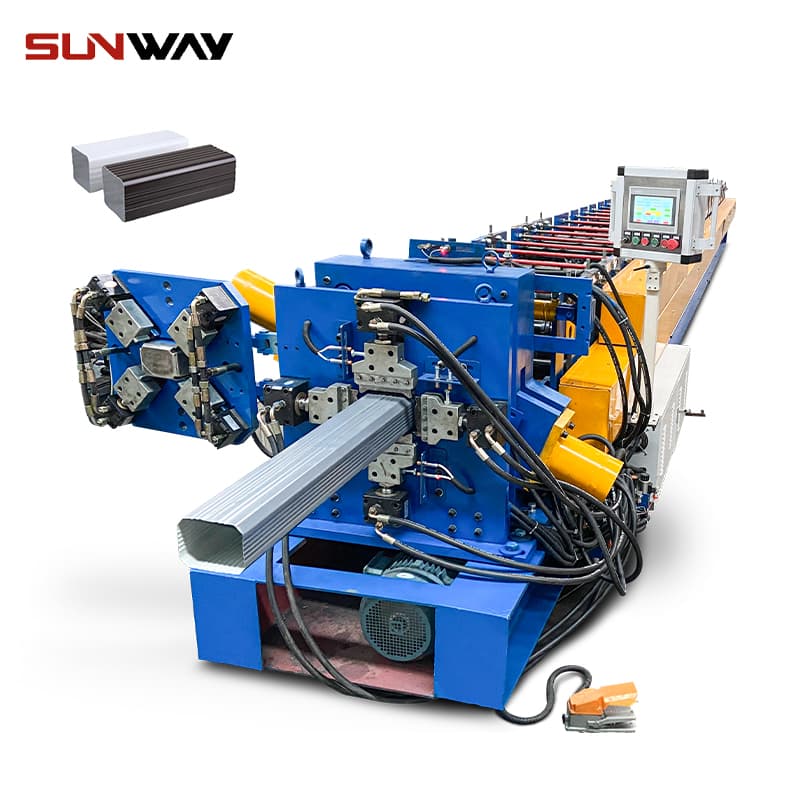
सामान्य प्रश्न
| Question | Answer |
|---|---|
| What is the standard thickness of metal roofing sheets? | Standard thickness ranges from 0.4 mm to 1.2 mm. |
| Can roofing sheets be customized in length? | Yes, most roofing sheets can be customized to fit the specific length of your project. |
| Which material is best for industrial roofing? | Corrugated metal sheets are preferred for industrial applications due to their strength. |
| Are plastic roofing sheets durable? | While lightweight and affordable, plastic sheets are generally less durable compared to metal. |
निष्कर्ष
Understanding the dimensions of roofing sheets is essential for choosing the right material for your project. Whether you’re selecting metal, plastic, or any other type, knowing the thickness, length, and width helps ensure proper installation and durability. From industrial to residential, roofing sheets provide versatile solutions that meet a wide range of needs. Consider the factors discussed here, from material choices to supplier comparisons, to make the most informed decision for your roofing project.
